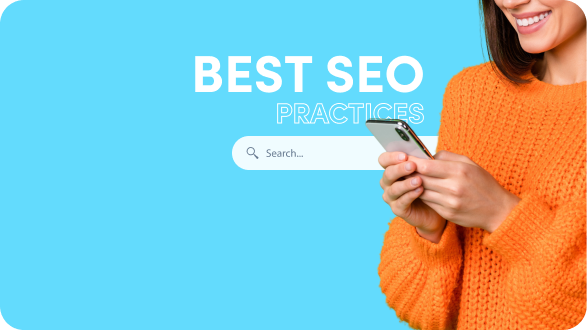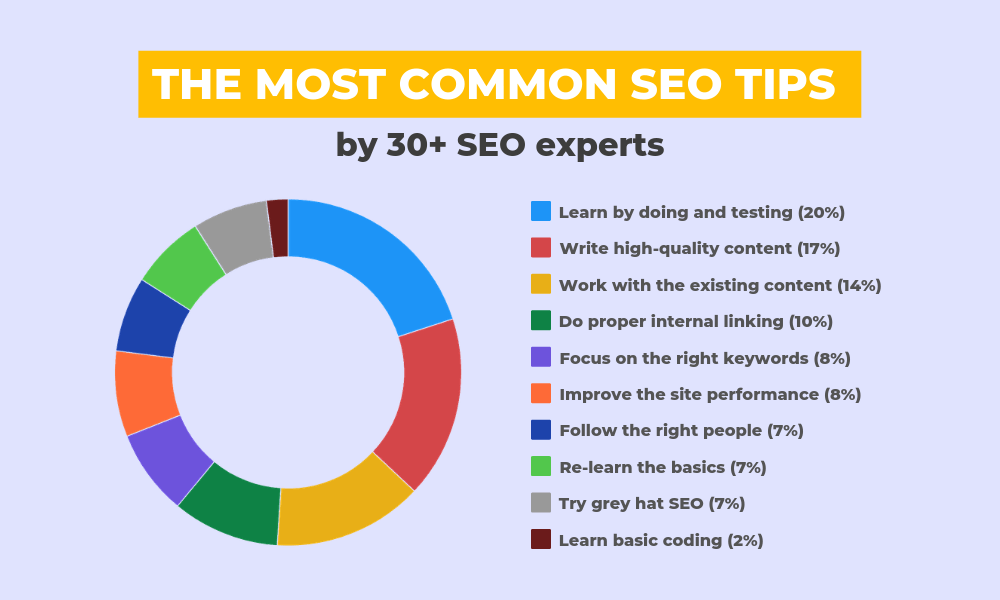Best SEO Practices for Beginners: A Complete Guide

If you’re just starting with SEO, you might feel overwhelmed by all the technical jargon, strategies, and tools available. However, the truth is, SEO doesn’t have to be complicated. With a few key practices, even beginners can drastically improve their website’s visibility on search engines like Google. In this guide, we’ll break down the best SEO practices for beginners that will help you improve rankings, drive more traffic, and ultimately grow your website.
What is SEO, and Why Is It Important?
SEO (Search Engine Optimization) is the practice of optimizing your website to rank higher on search engine results pages (SERPs). Ranking higher in search engines means more visibility, more traffic, and, potentially, more sales or conversions.
Think of Google as a library, and your website as a book. SEO is the way you make sure your book is well-organized, relevant, and easy to find. Without good SEO, your book (website) could be sitting on a dusty shelf, invisible to readers (your potential customers).

1. Start with Keyword Research
Keywords are the foundation of any SEO strategy. Keywords are the search terms that people type into Google when they’re looking for information. As a beginner, your goal is to figure out which keywords people are using that relate to your website or business.
How to Do Keyword Research:
- Use Free Tools: Google Keyword Planner, Ubersuggest, and AnswerThePublic are great tools for beginners. Enter your main topic or business type, and they’ll provide a list of relevant keywords.
- Target Long-Tail Keywords: These are more specific, less competitive keywords. Instead of targeting “SEO,” which is highly competitive, go for “best SEO practices for beginners.” These long-tail keywords often have a higher conversion rate because they capture more specific user intent.
- Focus on Relevance: The keywords you choose should match the content and intent of your website. Don’t just stuff keywords for the sake of SEO—always prioritize the user’s needs.
2. Optimize Your On-Page SEO
Once you have your keywords, it’s time to optimize your web pages. On-page SEO refers to the practice of optimizing individual pages on your website so they rank higher on Google.
Best On-Page SEO Practices:
- Title Tags: The title tag is the clickable headline that appears on search engine results. It should include your main keyword and be no longer than 60 characters. For example, for this article, the title is “Best SEO Practices for Beginners.”
- Meta Descriptions: This is the brief summary that appears under your title tag. It should be between 150-160 characters and should include the keyword. A compelling meta description can increase your click-through rate.
- Headings (H1, H2, H3): Use headings to structure your content. The main heading should be your H1 tag (usually the title), followed by H2 and H3 tags to organize sections. This helps both Google and readers understand the hierarchy and main points of your content.
- URL Structure: Keep URLs short, descriptive, and keyword-rich. Avoid complex URL strings. For example, a good URL for this article would be
www.example.com/best-seo-practices-for-beginners. - Alt Text for Images: Google can’t “see” images, but it can read the alt text, which is the description of the image. Always add descriptive, keyword-rich alt text to your images to help with SEO and improve accessibility.
3. Create High-Quality, Relevant Content
The saying “content is king” still holds true in 2024. If you want to rank high on Google, you need to create content that is valuable, informative, and engaging. Google’s algorithm prioritizes content that provides real value to users.
How to Create SEO-Friendly Content:
- Answer User Questions: Think about the questions your target audience might have and write content that answers those questions. Tools like AnswerThePublic can help you discover common questions related to your topic.
- Long-Form Content Ranks Better: Studies show that longer content (1,500+ words) tends to rank better in Google search results. However, don’t write just for the sake of word count—make sure every word counts by providing value.
- Use Keywords Naturally: It’s important to use your target keywords, but never force them into your content. Write for humans, not search engines. Overusing keywords can lead to keyword stuffing, which Google penalizes.
- Include Internal and External Links: Link to other relevant pages on your site (internal links) to guide users to more content. Also, link to credible external sources to show Google that your content is well-researched and trustworthy.
4. Optimize for Mobile
Google uses a mobile-first indexing system, meaning it primarily uses the mobile version of your site to rank pages. As a beginner, optimizing your site for mobile users is crucial because more than half of all web traffic comes from mobile devices.
Key Mobile SEO Tips:
- Responsive Design: Ensure your website automatically adapts to different screen sizes, whether viewed on a desktop, tablet, or smartphone.
- Fast Load Times: Slow websites can kill your rankings and user experience. Compress images, minimize code, and use browser caching to speed up your site.
- Avoid Pop-ups: Pop-ups that block content on mobile screens can frustrate users and lead to higher bounce rates. Google may penalize sites with intrusive pop-ups.
5. Build Backlinks
Backlinks are links from other websites to your site, and they are one of the most powerful SEO ranking factors. A site with many high-quality backlinks tells Google that it’s trustworthy and authoritative.
How to Build Backlinks as a Beginner:
- Guest Blogging: Offer to write guest posts for reputable websites in your niche. In return, you can usually include a link back to your site in the author bio or content.
- Create Shareable Content: High-quality, valuable content is more likely to be shared. Infographics, how-to guides, and original research are great ways to attract backlinks.
- Submit to Directories: Get your business listed in local directories (if relevant), as these can provide you with valuable backlinks and improve your local SEO.
6. Track and Measure Your SEO Performance
Finally, SEO is an ongoing process, and it’s important to track your performance to understand what’s working and what isn’t. As a beginner, using free tools like Google Analytics and Google Search Console can help you track your website’s traffic, performance, and keyword rankings.
Key Metrics to Watch:
- Organic Traffic: This is the number of visitors who find your website through search engines. Track how this number grows as you improve your SEO.
- Bounce Rate: This measures the percentage of visitors who leave your site after viewing just one page. A high bounce rate could indicate that your content isn’t engaging or your site is slow.
- Keyword Rankings: Keep an eye on where your website ranks for your target keywords. Google Search Console is a great tool for tracking keyword performance.
- Conversion Rate: Ultimately, SEO should drive valuable traffic to your site. Track how many visitors are converting into customers, subscribers, or taking other desired actions.
Conclusion
SEO may seem daunting for beginners, but with the right practices, you can start seeing results without being an expert. Focus on optimizing your content, website structure, mobile performance, and building backlinks. SEO is a marathon, not a sprint—be patient, and over time, your efforts will pay off in the form of higher rankings and more traffic.
The best part? SEO is cost-effective and provides long-term benefits, making it a must-have strategy for any beginner looking to grow their website or business.
Ready to improve your SEO? Start implementing these beginner tips today and watch your website climb the rankings!
comments powered by Disqus